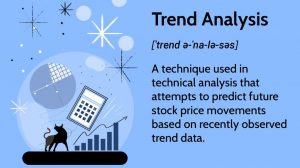“In business, I look for economic castles protected by unbreachable moats,” said Warren Buffett, the Oracle of Omaha. Market trends can serve as these “unbreachable moats” if harnessed correctly, providing businesses with a competitive edge and fortifying their strategy against market shifts. In this article, we will explore the depth of influence market trends have on business strategy and the techniques used to successfully navigate these trends.
Understanding Market Trends
Market trends, in the simplest terms, are the general direction in which a market or a subset of the market is moving. These trends can be upward (bullish), downward (bearish), or even move sideways. Understanding these trends is crucial as they are a reflection of consumer behavior, economic conditions, and industry movements.
For example, during the COVID-19 pandemic, one key market trend was the significant rise in remote working. This trend led to an increase in demand for cloud-based software and collaboration tools, impacting businesses like Zoom and Microsoft Teams. Conversely, businesses that primarily operated offline, such as traditional office spaces and coworking hubs, were hit hard.
Influence of Market Trends on Business Strategy
The importance of market trends in shaping business strategy cannot be overstated. They can influence various facets of business strategy, including:
Product Development: If a business identifies a growing trend, they may opt to develop new products or services that align with this trend. For instance, the growing trend of fitness and wellness has led many food and beverage companies to develop healthier, organic alternatives.
Marketing Strategy: Market trends can heavily influence marketing strategies. As consumers increasingly turn to social media, businesses have pivoted from traditional advertising to digital marketing strategies. Influencer marketing is a prime example of this shift.
Sales and Distribution: Trends can also affect how and where products are sold. The rise of e-commerce has seen businesses increasingly selling products online rather than in physical stores.
Investment and Funding: Businesses and investors keep a close eye on market trends to decide where to allocate resources. A growing trend may attract more investment, while a declining trend may see reduced funding.
Identifying and Leveraging Market Trends
The ability to identify and leverage market trends is a critical skill in today’s fast-paced business environment. With advances in technology, businesses have more tools at their disposal than ever before.
Big Data Analytics: The use of big data analytics allows businesses to analyze large data sets to identify patterns, correlations, and trends. This can help businesses predict future trends and make informed strategic decisions.
Artificial Intelligence (AI): AI can process and analyze data much faster than humans, making it a powerful tool for spotting emerging trends. AI can also be used in predictive analytics, providing businesses with a forecast of future market trends.
Social Media Listening: This involves monitoring social media platforms to gain insights into customer behavior and emerging trends. This real-time information can be instrumental in shaping business strategy.
The famous hockey player Wayne Gretzky once said, “I skate to where the puck is going to be, not where it has been.” In the realm of business, this means anticipating and capitalizing on market trends rather than simply reacting to them. By understanding the influence of market trends on business strategy, businesses can stay ahead of the curve, ensuring their strategies are not just responsive, but proactive and forward-thinking.
















